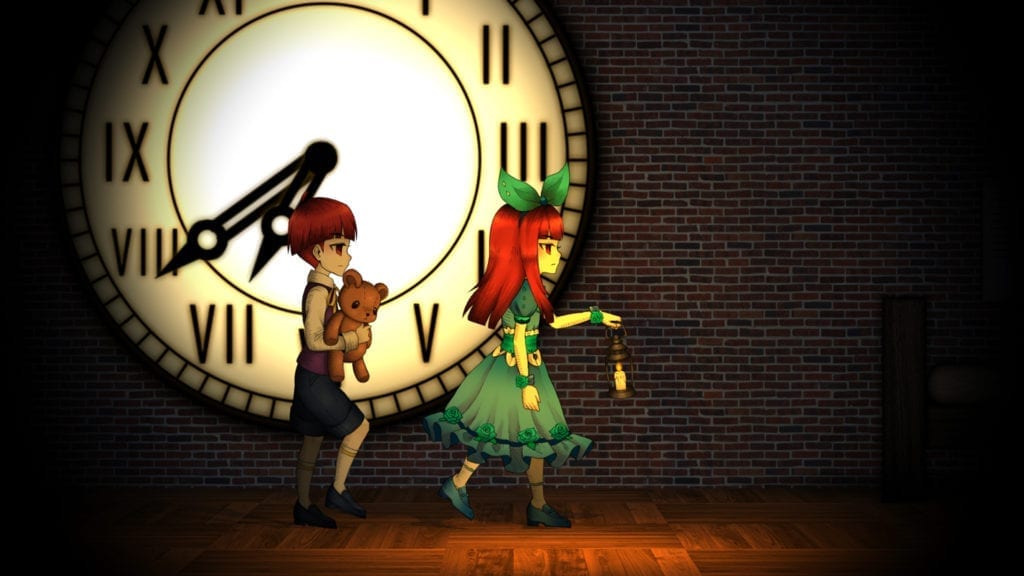Somewhere at the crossroads of video games and education, we have a genre known as edutainment. The idea is that video games and teaching have an immense capacity for crossover. This week brings us a neat little title in the form of Robo Instructus. The result is a bridge between puzzle gaming and basic programming language, and the game serves as an introduction for programming to newcomers. Aside from Robo Instructus, we tested three other games as well.
Here are the demos we tested this week, along with links for those who wish to try them.
Robo Instructus
Robo Instructus shines with its graphics, soundtrack, and overall presentation. But the fact that it trains the player to use basic coding elevates it to something else entirely.
The goal is to move the robot from one point to another. In order to achieve this, you must type in basic coding commands. The game, with its science fiction lore, interjects and occasionally trains you on what code to use. Since this training occurs on an alien world, it is always done from the perspective that you, the player, are a Salvage Engineer. Your mission on this planet is to find valuable items that were lost when a spaceship crashed there. Instead, you found this lowly robot, valuable to none other than yourself.
The coding begins at a basic level and slowly introduces more complex commands. Since much of the demo revolves around trying and retrying the right coding segment, the game has a speed-up feature to make this aspect more playable.
Recommendation: For those who are curious about getting into programming, but would like a taste of sci-fi to ease them in. Or, for veteran programmers who want to mess around with a relaxing game.
Clea
Clea is a side-scrolling survival horror game. Stylistically, the demo presents an anime art scheme. What’s most attractive about the game, though, is its use of stealth elements. Instead of using weapons, you must use your wits. When an enemy enters the room, the game requires you to hide in a nearby closet. The only other option is to ward them off with an arcane candle. Of course, your stock of those is limited.
I found it best to learn where the hiding spots are. The enemies won’t follow you into closets, so these essentially act as safe-zones. Despite the art style, this game truly scared me. If I’m a wuss and I don’t know it, please tell me in the comments. The menu recommends that you play the demo with headphones. Since sound is so important to the atmosphere, I found the demo was more impactful that way.
At the same time, I found myself rooting for the titular character. Why do these monsters stalk Clea in her own home?
Recommendation: For fans of hide-and-seek, but not the innocent kind.
Mago
I love simple control schemes, and Mago satisfies this urge perfectly. This 2D, sprite-based game features three basic actions: movement, jump, and sprint. The sprint button also acts as a spell that has different functions depending on where you apply it. It can stun enemies, activate moving platforms, and unlock secrets. Above all else, the spell command keeps Mago from being just another basic side-scroller.
I also appreciated the ability to remap the controls, something that always wins points in my book. The only downside to Mago is its tiresome storyline. We watch as the bad guy tears our hero’s love interest away from him, as villains so often do. The hero must then platform his way through evil creatures to find her and save her. While platforming is the real purpose of the game anyway, it would have been nice to see some lore that is unique.
Recommendation: For simple, 2D action, give this magical demo a try.
Ode to a Moon
At first glance, it seems like Ode to a Moon is a first-person exploration game. In reality, this game is almost totally on-rails. Some interaction with the environment is present, but not much. With that said, the game is utterly bizarre and at least deserves a look.
Ode to a Moon is dark, eccentric, and hard to understand. To make matters even worse, sometimes the environment morphs into a trippy, melty reality with no apparent explanation. Normally, I don’t enjoy games that make me feel disoriented, especially if the game is first-person. But I wanted to share this demo with people anyway, if only for how unusual it is.
The biggest problem with a trippy game like this is when you encounter a bug, it’s not clear if it’s actually a bug. At one point I fell through the map, but it took me several moments to realize that it wasn’t actually a part of the game.
Recommendation: If you’re interested in a walking sim with a psychedelic twist, though this game might make you disoriented.
Final thoughts
When it comes to educational games like Robo Instructus, I have fond memories of older software like the Microsoft Encarta encyclopedia, and I was crazy about the exploration/trivia game known as Mind Maze. Edutainment games have the capacity to fool you into learning something. You go about them as a game, and before you know it, you’re interacting with a playable piece of education. Also, they really helped my third-grade computer class go by more quickly.
Last week, we covered the demos for Infernium, Pulang: Insanity, Blast-Axis, and Spy Tactics. If you’re a developer or publisher and would like to have your demo covered in this series, you can contact editor (at) pcinvasion (dot) com.












Published: Jul 22, 2019 08:39 pm